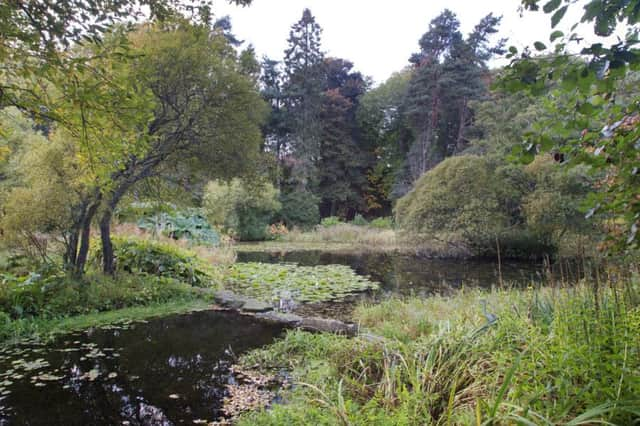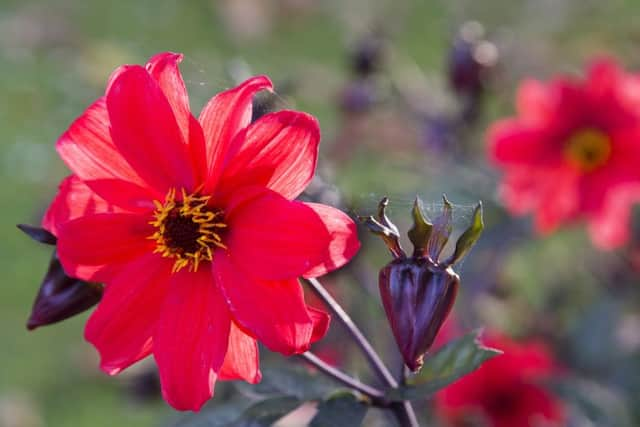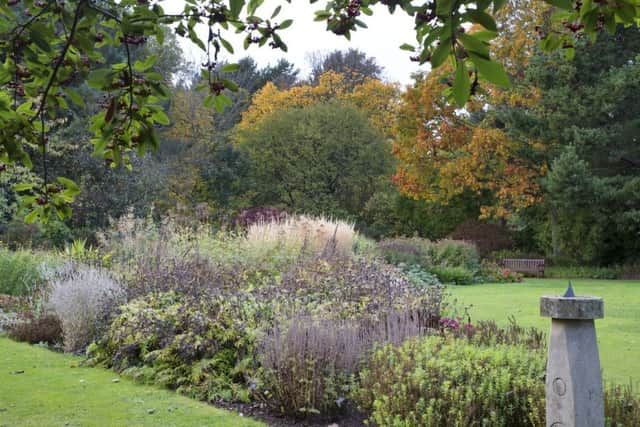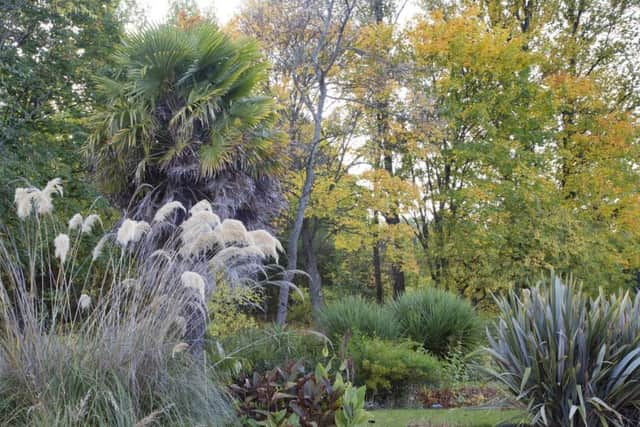St Andrews Botanic Garden, a place that educates and inspires


IT HAS been described as a hidden gem among gardens of Scotland, although with 8,000 species of ferns, herbaceous plants and trees, and an international reputation for botanical knowledge, those in the know have already discovered it.
In autumn there are stunning reds from sorbus berries, sunflowers giving their last rays, and the copper bark of the Acer griseum trees preparing to take centre-stage in winter. It’s a garden with enough year-round beauty to keep visitors blissfully unaware of the science behind the plants. But if you want to know more, there’s well over a century of expert botany, plant collections from all over the world, and a careful design waiting to be explored.
Advertisement
Hide AdAdvertisement
Hide AdThe main function of St Andrews Botanic Garden is to educate the public. It was planned and developed by the university for teaching and while it is still used for students of botany, it is used increasingly to educate the wider public, from nursery-age children upwards, says Bob Mitchell, emeritus curator. Some of the species are native to Scotland, but most grow wild in other parts of the world. Everything outside is hardy and can be grown in the area around St Andrews.


The garden was founded by the university in 1889 and was laid out in 78 regularly shaped beds. By 1960, it had grown to cover nearly eight acres and the development of university-owned fields rapidly increased this to 18 acres, allowing the plant collection to grow substantially. From the early Sixties, the garden was developed into its modern design by Bob, who was its curator for 20 years, with Jim Mackie, late head gardener.
“Educating the public is prime,” says Bob, who arrived in 1962 as assistant curator and took over as lead curator in 1967. As well as being a garden to enjoy, it is one that has been planted with scientific aims for the purposes of teaching. For example in the Harold Pirie garden, several layers of trees and shrubs in taller and shorter heights have been planted to make use of the space and to grow plants in the conditions most closely replicating their natural habitat. A shelter belt of conifers to give protection against the wind was the first priority, and within the boundary further shrub borders provide a micro-climate for more tender plants.
The layout connects a series of small gardens with rock garden merging with scree, then heath, as they are likely to occur naturally. The rock and scree lie on a slope, mirroring their natural homes.
The heath garden marks the transition from the more alkaline part of the garden to the more acid part, where rhododendrons and azaleas are found. About 80 dwarf rhododendron species are there and, with other plants in the woodland garden, there are flowers from February to November.


Waterfalls and ponds then alter the dynamic again and provide sensory change as well as attracting increasing numbers of birds and mammals. The glasshouses then signal a more formal design, with herbaceous and display beds, herbs and “order beds”. In these beds the design follows the Cronquist classification, where plants from the same botanical group are grown to display their shared characteristics to teach students about plant evolution. The ornamental trees and herbaceous plants create dazzling displays in deep borders until the first frosts.
Geographical borders have been added to increase public awareness of plants by region. The China border contains material collected during a 1981 expedition with Chinese botanists, led by Bob. The Chile border contains plants from the other side of the world and is being added to with herbs and bulbs. Demonstration gardens are being developed too for adult education programmes.
These gardens display the wealth of world plants now available to modern town gardeners, compared with 17th century culinary and medicinal gardens. A vegetable garden will show visitors how to make the best of their plot, in particular varieties of fruit and vegetables suitable for Scotland.
Advertisement
Hide AdAdvertisement
Hide AdWhile he was curator, Bob devised a junior horticultural club for primary-age children, which meets once a month and now has a waiting list. Former members who grew up with the club come back and help the current budding gardeners. “When I was getting the second generation through I gave up running it,” Bob laughs. University students and volunteers help with the schools programme. A Gruffalo trail, created by the education programme from the best-selling book, was a hit this year.


The garden’s collections evolved as a result of their connection with higher education. When taxonomy was taught more widely students needed as wide a plant collection as possible, says Bob.
There is a lot of colour throughout the year and in particular at this time the berries from sorbus, vibrant leaves and late perennials such as sedum bring warmth and texture in spades. Special collections include cotoneaster, which is spread throughout the garden, berberis and sorbus, which have all held important roles in the university’s research.
There are also half a dozen “champion” trees, which are bigger than others of the same variety elsewhere in Britain and Ireland. Bob, who chooses a plant of the month to highlight for the garden’s website, has this month focused on bark from the many trees that give winter interest. These are snake bark maples, the luminous white Himalayan birch and the paperbark maple, with its peeling copper trunk. Dogwoods provide scarlets and greens to look forward to, Cornus alba “Sibirica” with its red bark and Cornus stolonifera “Flaviramea” in olives.
With a gardening staff of three and many volunteers, under the umbrella Friends of the Botanics and charitable trust which runs the garden, St Andrews Botanic Garden has plenty to shout about this winter and beyond. n
St Andrews Botanic Garden’s winter opening 10am-4pm. To find out more about the garden’s courses and events, visit www.st-andrews-botanic.org